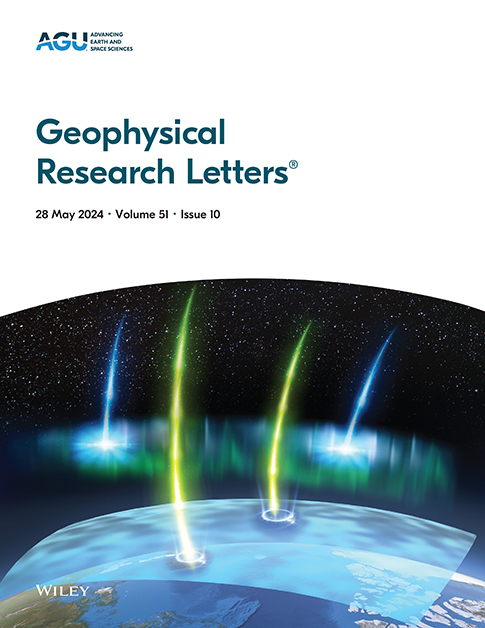热液条件下不同初始粒度天然花岗岩沟槽的摩擦行为
IF 4.6
1区 地球科学
Q1 GEOSCIENCES, MULTIDISCIPLINARY
引用次数: 0
摘要
断层核中的细粒泥通过其摩擦行为和微观结构演化控制着地震的发生。本文对不同初始粒度的天然花岗岩沟槽进行了热液条件下的摩擦实验。为了获得细晶和粗晶试样的速度(V)依赖性,在25-600°C、100 MPa孔隙压力和100 MPa有效法向应力条件下,在0.01 ~ 100 μm/s范围内进行了速度步进测试。在速率-状态摩擦框架中,我们观察到细粒泥在1-100 μm/s的V范围内比粗粒泥在更宽的温度范围内具有强烈的速度弱化。速度减弱可能是由机械粉碎(颗粒尺寸减小)和膨胀颗粒(即碎裂)流动的结合造成的,这些流动与压实和蠕变相竞争,涉及颗粒尺度的压力溶液传质。我们还推断,超细颗粒的温度依赖性晶粒生长在决定速度弱化的温度上限方面起着重要作用。本文章由计算机程序翻译,如有差异,请以英文原文为准。
Frictional Behavior of Natural Granite Gouges at Hydrothermal Conditions With Varied Initial Grain Size
Fine‐grained gouge found in fault cores controls earthquake generation through its frictional behavior and microstructural evolution. Here we present friction experiments on natural granitic gouges of various initial grain sizes at hydrothermal conditions. To obtain the velocity(V )‐dependence of friction of both fine‐ and coarse‐grained samples, velocity‐stepping tests were conducted between 0.01 and 100 μm/s at 25–600°C, 100 MPa pore pressure and 100 MPa effective normal stress. In the rate‐and‐state friction framework, we observed that fine‐grained gouge is strongly velocity‐weakening over a substantially broader range in temperature than coarse‐grained gouge at V of 1–100 μm/s. Velocity‐weakening may result from a combination of mechanical comminution (grain size reduction) and dilatant granular (i.e., cataclastic) flow, operating in competition with compaction and creep involving grain scale mass transfer by pressure solution. We also infer that temperature‐dependent grain growth of ultrafine particles plays a role in determining the upper temperature limit of velocity‐weakening.
求助全文
通过发布文献求助,成功后即可免费获取论文全文。
去求助
来源期刊

Geophysical Research Letters
地学-地球科学综合
CiteScore
9.00
自引率
9.60%
发文量
1588
审稿时长
2.2 months
期刊介绍:
Geophysical Research Letters (GRL) publishes high-impact, innovative, and timely research on major scientific advances in all the major geoscience disciplines. Papers are communications-length articles and should have broad and immediate implications in their discipline or across the geosciences. GRLmaintains the fastest turn-around of all high-impact publications in the geosciences and works closely with authors to ensure broad visibility of top papers.
 求助内容:
求助内容: 应助结果提醒方式:
应助结果提醒方式:


